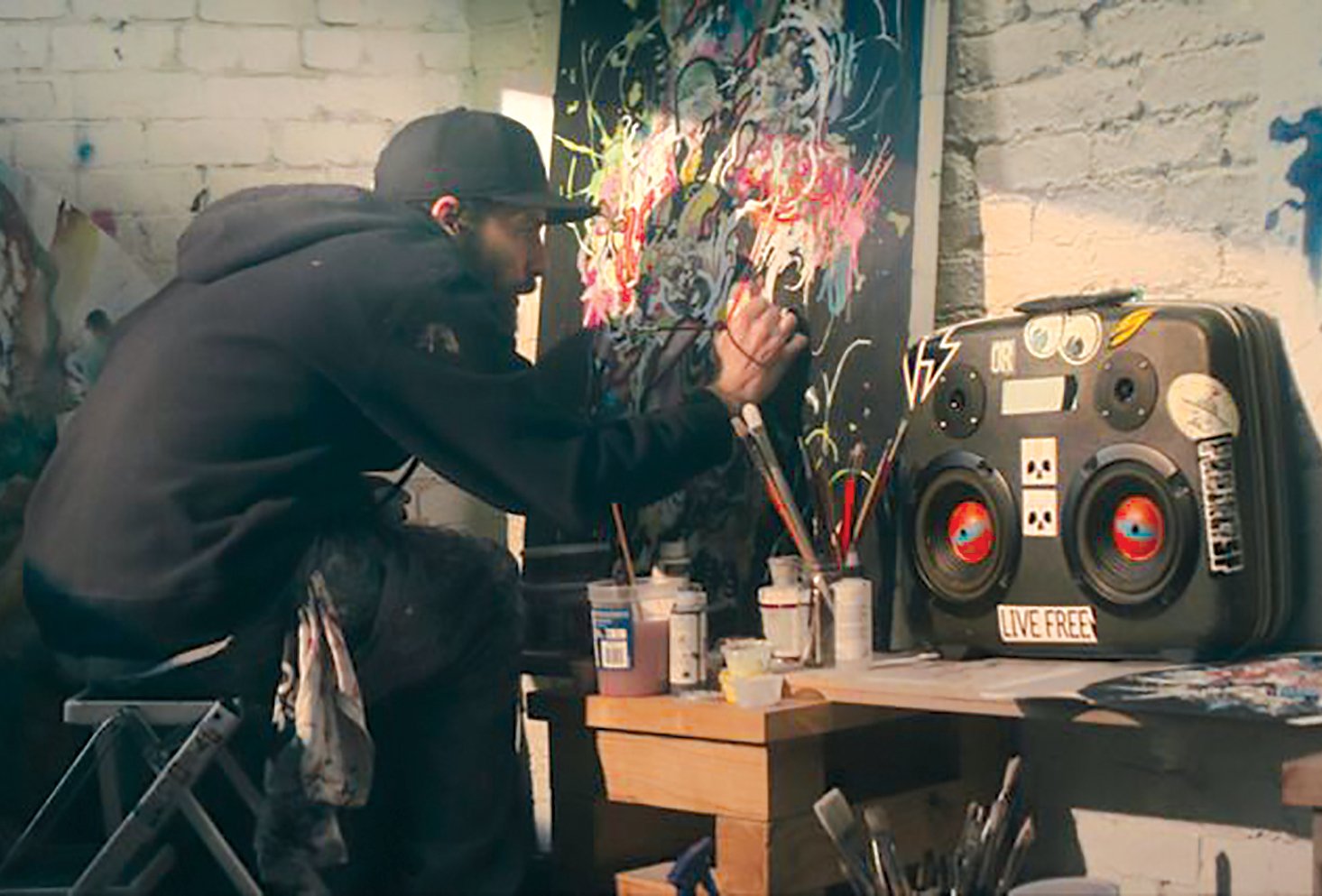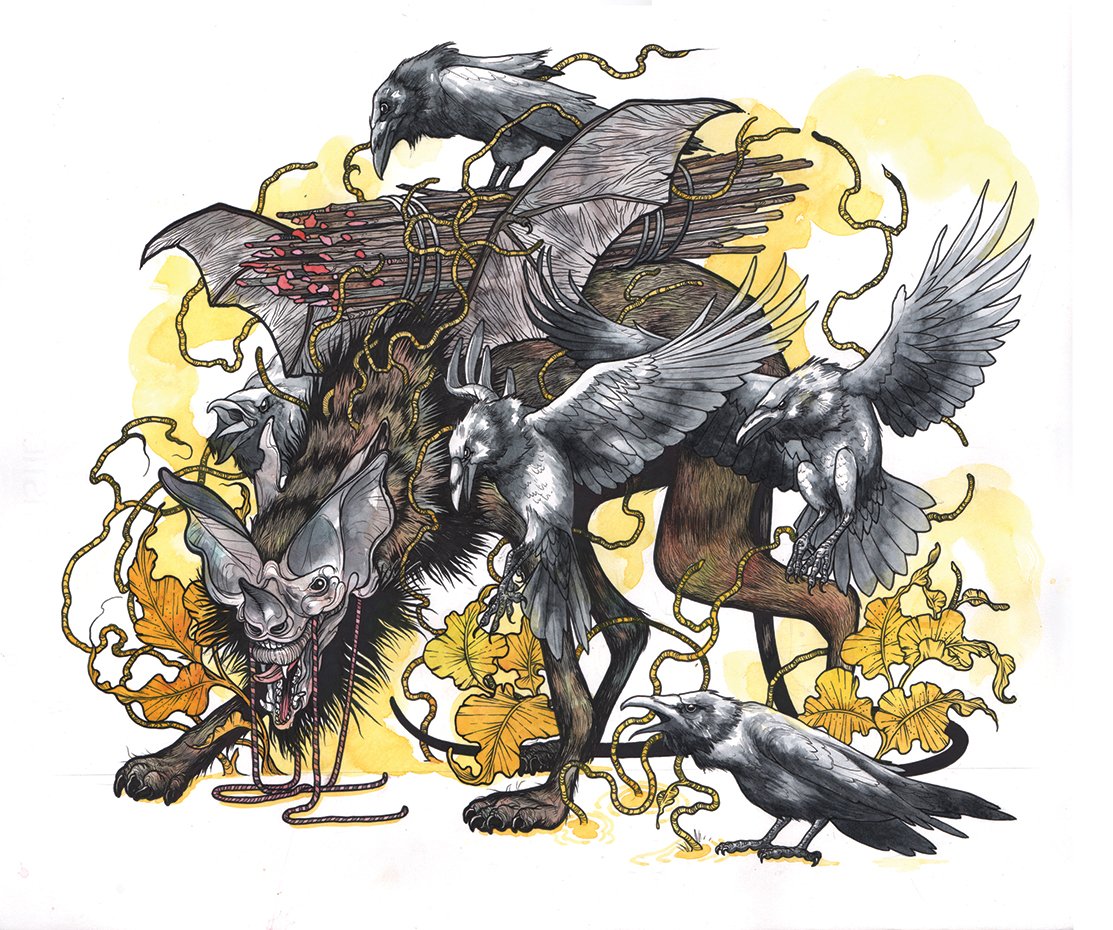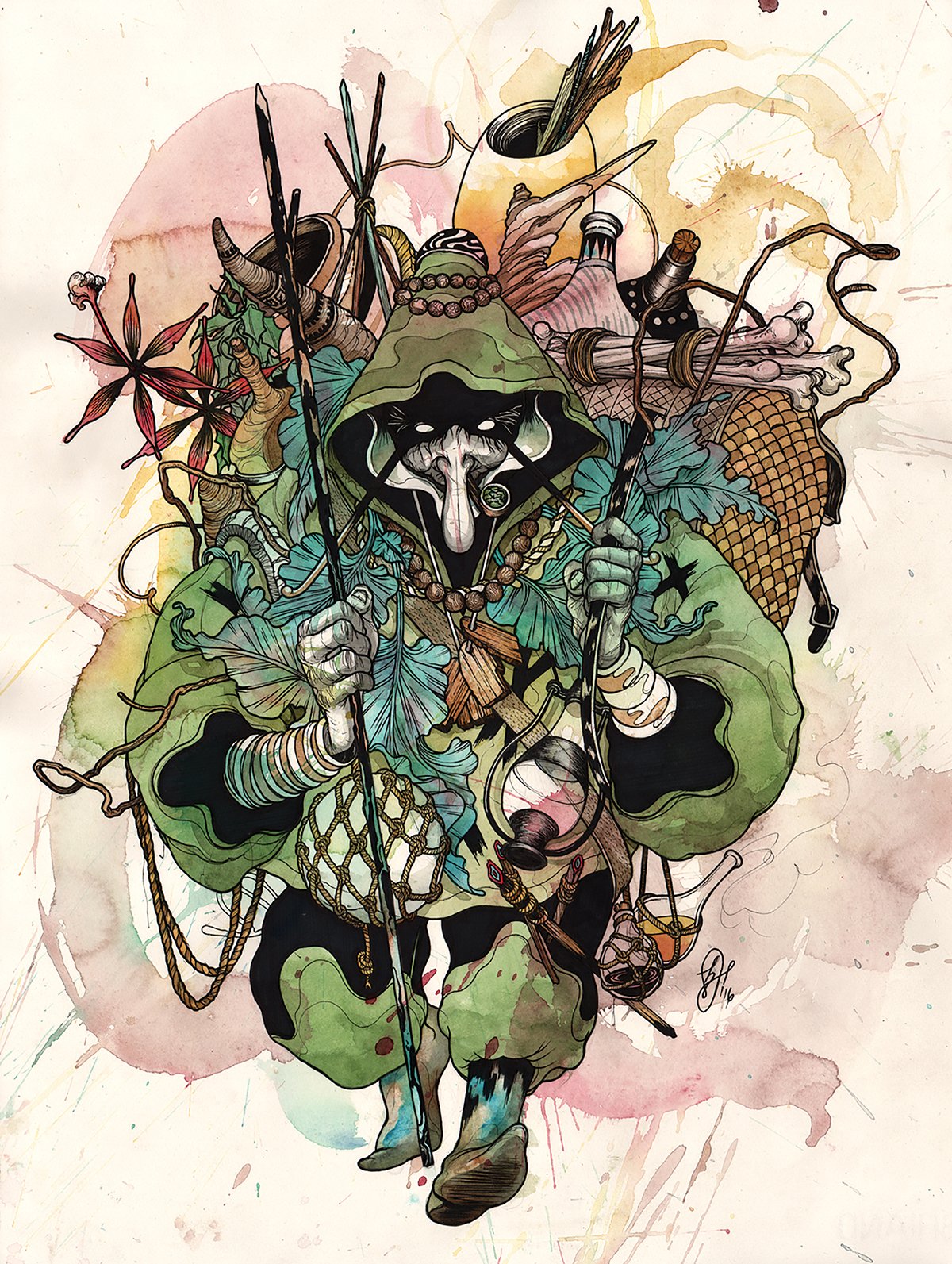Portland Artist Zach Johnsen


From the outside, the North Coast Seed Building just looks like an antiquated four-story brick building facing the railroad track in the industrial part of north Portland. All the way at the top of the fourth floor, Zach Johnsen shares a huge creative studio space, showcasing the vast array of his many artistic talents. The creatures that he conjures up with his pens seem other worldly with their intense mythical powers that jump out at you from the page. Come check out Johnsen’s latest talents and see his doodles in person at Talon gallery in SE June 17– July 12.
Eleven: What is the name of the art studio building that you work out of?
Zach Johnsen: The North Coast Seed Building, it used to be a seed storage facility before becoming an art studios space.
11: How do you feel that increased rent prices have influenced the ability for many artists to get spaces in buildings like this?
ZJ: There is like no turn-over rate in this building, we are all holding it down hoping that the building doesn’t go away. I know that the building is old, and I know we may be on the city’s radar because the building is so old and would not withstand an earthquake. The owner owns a lot of other buildings that are studio spaces as well. This place is on the radar for a lot of artists, and people know about it. If anyone ever does leave, their spot is usually already spoken for like three years in advance because there is such a long waiting list for the building. It is really cool of the owner that he has kept it pretty affordable throughout the years, and for the people who have been here 10 to 15 years, they are paying even less. When I got in, it was already in high demand and I only got in because I was friends with a guy who is my studio’s next door neighbor.
11: Are you from Portland originally?
ZJ: I am from New Hampshire originally, a New England boy.
11: Did the art scene pull you here?
ZJ: It was less the art scene and more of the outdoor life. I moved here in 2008 not knowing all that much about the art scene or very many people. I actually first came out here for a summer in 2007. Portland was always on my map because it was close to Mt. Hood. I grew up snowboarding and always read about the High Cascade snowboarding camp. I was just kind of testing it out then. I found a cheap Craigslist room and I moved into this flop house and met all these dudes that were kind of punk. They took me dumpster diving for the first time. I never did that before. I thought this place was weird but it smelled better than New York where I was living before. It was also the cheap rent, I couldn’t even afford a studio in NYC.

11: Tell us about your “Acid in the Ice Cream” series.
ZJ: Every time I have an art show I make a theme and narrative that can run though the work. That stuff did evolve. All of my drawings have very stark backgrounds. The focus is on the characters, almost like trading cards with the focus being on the character that has their own attributes and powers. “Acid in the Ice Cream” is my series with corporate guys whose heads seem to be exploding in colors. Some people thought that series was about lactose intolerance–kind of funny. I never even thought about that and how dairy is bad for you and it might make your head explode. I wanted to start painting too, because most of my work was drawing up to that point and I wanted to break into painting. I started painting, and it made my work look different. Not working on paper I could experiment with mediums a little more and I could get a little rougher with the surfaces and splash stuff around and make different marks.
11: How did you evolve into making the art that you make now? You have many different mediums, will you talk about all the different things that you do?
ZJ: I have a lot of things that I do. I am kind of ADD when it comes to art. My basis is illustration and that’s what I went to school for: Communication Arts. That was where I developed this style of pen and ink and watercolor on paper that I do for the most part. I have since branched into a whole lot of other things. Around the time I graduated from art school in Boston, I met a guy who approached me about starting a T-shirt design company and I was really into the idea. We got along really well and started a screen printing T-shirt company, which did really well. I was doing illustration work and I was also learning how to do graphic work and screen printing so those kind of came hand in hand before I came to Portland. Then I decided to do this crazy series with businessmen whose heads look like they are blowing up in 2008. At the time I was doing apparel graphics in NYC and I had a full time job at Nautica, but I wasn’t a designer I was a graphics guy working in the design department.
11: It didn’t feel fulfilling?
ZJ: Yeah it was totally boring. I mean it was great that I got a good paycheck and had a good job and was able to live comfortably.
11: Was that you, the corporate guy with the head exploding?
ZJ: I never wore a suit or anything but yeah that series came about from that time when I did that job. That series got inspired by the corporate culture that bothered me so much. I was annoyed by the daily birthday parties in the break room. Everyone would bring cake and donuts or whatever and it was always someone’s birthday and what should have been a fun time ended up being this group of grumbling people forced to hang out in the break room. My head wanted to explode because it was just so boring. So the series was inspired by the experience of having to work in the corporate American culture, it was sugary sweet and monotonous, tied to the overconsumption of bullshit.

11: What would you say your artwork says about you?
ZJ: I’m from New Hampshire so I grew up as a bit of a woods boy. I didn’t have neighbors. My parents had 13 acres around their house, and even beyond that there was just more woods so it was a very isolated, rural upbringing. There were sprawling dairy farms and woods out there. In the winter it was cold and snowed a ton. My family is from New York, my parents both lived in the city and in their twenties my parents escaped. My mom was a definite hippie, my dad kind of a greaser and neither really wanted anything to do with city life so they bought a plot of land out in New Hampshire. I would still visit family in the summers so I would see the city. In my heart of hearts though I am kind of a wildling. I was always outside, I would hardly even go inside even to use the bathroom. I was just always playing.
11: Will you tell us a little bit about the sketchbook that you published?
ZJ: That was a culmination of many years of sketching. The work in there looks a little different than my finished works, like my government overlords in the spiritual world and the “Acid in the Ice Cream” series. It’s still kind of new and I just released it in the last few years. It was something I always wanted to do, to publish my own book. I didn’t necessarily want it to be pretty, not like a nice book. I wanted it to look kind of raw, like one of my black sketchbooks that I filled up, all used and mangled with spilled coffee on them. That was what the book was meaning to replicate, like a filled black art book of mine. It’s a compilation of images from my sketchbooks stretching back to my college days, I would scan them in and I would compose the pages a little bit and overload each page with drawings.
11: Did someone come to you with the idea of publishing the book or did you seek out someone to publish it for you?
ZJ: I self-published it. I did a Kickstarter campaign to fund that, and that was an informative and interesting process in its own way. I had to have a plan and keep up with constant communication with everybody. It can be tough, and it was awesome that I was able to fund it with 200-300 backers. I got more than what I even asked for, so it covered the cost of printing the books and shipping them. I didn’t realize that shipping would come to cost a small fortune, especially internationally. To Japan it costs like $46 just to ship one book.
11: How did all your international fans find you?
ZJ: I have a pretty good email list going from doing a lot of freelancing in my past and through social media, and I was able to really get the word out there like that. I actually did really good because it became the staff pick for Kickstarter so it just took off after that. I made a video that was really important to get the book out there, I had an assistant too that helped me to make it and get it out on Youtube and pitch the idea to draw up some support for it.

and ink on paper, 2016)
11: What are you working on next? Do you have a showing coming up?
ZJ: Yeah my next show is going to be at Talon gallery June 17 – July 12. Talon gallery is Antler gallery’s new space that they opened on Division and SE 11th, right next to the Ford building and Pine State Biscuits. I am doing a two person show there with this guy Alex Kuno, and his work kind of relates to mine. Kuno does really good work so all of you will have to check him out. That show will be showing work that is a little simpler and illustration-based. The work will be similar to some of the illustration I did for the Folklore show but a little more refined–paper, ink and watercolor. »




